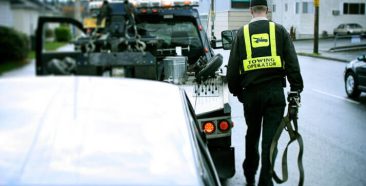
Almost every driver is familiar with liability insurance (it’s the kind you’re legally required to carry), and many drivers have heard of collision insurance, too (it covers damage to your car regardless of who is at fault in an accident with another automobile). But fewer vehicle owners have heard of comprehensive car repair insurance or understand how it can further protect their car.
In the following blog we will define the most important points on this topic so you can learn what it is, how it works (specifically in California) and six useful examples to showcase why it’s a great idea to include it in your auto insurance policy.
What Is Comprehensive Insurance?
This protection covers the costs of repairs to your car when it’s involved in something other than a collision with another vehicle. Just as with liability coverage, you can make a comprehensive insurance claim regardless of whether you are at fault for the accident.
Typically, comprehensive insurance covers damage to your automobile when:
- Someone steals your car or parts of it, such as the tires or hubcaps
- Someone floods, or other natural disasters damage it
- A tree branch or other large object falls on your vehicle while it’s legally parked
- You hit a large animal while driving
Comprehensive vs Collision Insurance
Dealing with different kinds of policies can be confusing, but we’ve got you covered. Collision insurance is the counterpart of comprehensive since it pays for damages to your vehicle in the event of an accident, whether it’s during transit or parked. This type of coverage is typically required if you have a car loan or lease, as the lender wants to make sure the vehicle is properly covered.
Collision insurance covers damages to your automobile, regardless of who is at fault for the accident. This means that if you are involved in a collision with another vehicle, or if you hit a stationary object, such as a tree or a wall, your policy will cover the costs of repairs or replacement of your vehicle.
Additionally, collision insurance has a deductible, which is the amount you pay out of pocket before the insurance kicks in. It’s a useful coverage to have, especially for those who are financing their car, as it helps to protect your investment and keep you on the road.
Comprehensive vs Liability Policy
It is important to understand that comprehensive insurance does not cover damages to other vehicles or property, and it does not cover injuries to yourself or others. That type of protection is provided through liability insurance.
It’s easy to understand the difference when comparing against liability policies if you remember that the latter one is for injuries and damages to third parties instead of damage to your own automobile in the case of an accident. You can protect yourself with both bodily injury/death and property damage coverage. So, think of comprehensive as safeguarding your vehicle, while liability insurance covers what happens to others.
What Comprehensive Insurance in California Doesn’t Cover
So, to summarize: comprehensive insurance protects your car only when it’s involved in an event other than a collision with another vehicle or object while you are driving. It does not cover you in these situations:
- Damage to other vehicles in an accident
- Damage to your car when you collide with another one, and you’re at fault
- You collide with an object such as a tree or post while driving
To protect you in these situations, it’s a good idea to consider getting a collision insurance policy or increasing your liability insurance beyond the legal minimum coverage in California.
Is Comprehensive Insurance Required in California?
In California, only liability insurance coverage is legally required. However, suppose you’re leasing a car or financed the purchase of a new vehicle. In that case, the leasing company or lender may require you to maintain comprehensive car repair insurance coverage and additional policies until the lease period is over or until you’ve paid off the loan. Before you sign the lease or loan agreement, make sure you read through everything and understand exactly what kind of insurance coverage you need.
Comprehensive Car Repair Insurance in California: The Basics
Deductible
This is the amount of money you’re willing to pay before the insurance company starts covering the costs to fix your car. A lower deductible means the comprehensive insurance company will help cover more of the costs to fix your ride, but it also means you’ll pay a higher premium.
Policy Limit
This is the maximum amount of money that the insurance provider will pay to cover damage to your car, minus the deductible. For example, if you have a policy limit of $5,000 and a deductible of $1,000, then the provider will pay up to $4,000 to repair it.
If you’re in an accident where the cost of repairs is more than the value of the car, then the vehicle is considered “totaled.” In that case, the insurance company will send you a check equal to the policy limit minus your deductible for the value of your car.
Premium
The premium is the final price of the policy. You pay the premium whether or not your car is involved in an accident or damaged in some other event
Remember that a higher deductible and a lower policy limit mean a lower premium.
How Insurance Companies in California Determine the Value of Your Car
Before we get into the six examples we have prepared for you to understand how this policy works, there are some key definitions we need to get out of the way first.
Actual Cash Value
In California, the actual cash value (ACV) can be considered the car’s market value before the damage occurred. ACV is based on factors such as the age of the vehicle, mileage, and amount of wear and tear.
Salvage Value
The salvage value would be the value of the vehicle if it were to sell in its current unrepaired condition. In almost all situations, your ride has a salvage value because even a completely destroyed car might be worth $50 or $100 in scrap metal.
Total Loss
Auto insurance providers in California use a special formula to determine whether your car is worth repairing:
Repair Cost + Salvage Value ≥ Actual Cash Value
In other words, if the cost to repair the car plus the salvage value is greater than the ACV of the vehicle, then the insurance will consider the vehicle a “total loss” (also known as “totaled”). When this happens, the insurance company will have the vehicle salvaged and send you a check for either the ACV of the automobile or your policy maximum (minus the deductible), whichever is less.
In some situations, you may not want the policy provider to take your car to be salvaged. Perhaps you can do the repairs yourself, or perhaps you want to keep the vehicle for personal reasons. In this case, you can essentially “buy back” your damaged car from the insurance company for its salvage value.
Examples of How Comprehensive Insurance Works in California
Exactly how your insurance works depends on the circumstances of the incident, the costs of the repairs, and the ACV (current market value) of your vehicle. Here are a few example situations:
1.Vandalism
Jerry wakes up one morning to find that someone has keyed his new car, slashed the tires, and stolen the hubcaps. The total repair and replacement costs amount to $2,300. Luckily, Jerry has a comprehensive insurance policy with a deductible of $1,000 and a maximum limit of $10,000.
How Jerry’s Coverage Works:
- Jerry needs to pay for the first $1,000 of the repair costs (his deductible).
- There is still $1,300 to pay for the repairs.
- The comprehensive insurance company covers the remaining $1,300.
- In total, Jerry pays $1,000, and the insurance company pays $1,300.
Also, comprehensive car insurance is a type of auto insurance coverage that offers protection against a wide range of risks, such as theft, fire, vandalism, and natural disasters. If someone steals your car or vandalizes it by damaging the windows, paint, or keying the car, comprehensive insurance will typically cover the costs of repairs or replacement, up to the policy limit. It’s important to note that comprehensive coverage is not mandatory, but it can provide valuable peace of mind and financial protection for car owners who want to safeguard their vehicles against keys or vandalizes your car.
2. Natural Disaster
Miriam’s car is severely damaged in a hailstorm. It is worth $10,000. The total repair and replacement costs amount to $1,500, and the insurance company determines the salvage value of the vehicle is $8,000. Luckily, Miriam has a comprehensive insurance policy with a deductible of $500 and a maximum limit of $10,000.
How Miriam’s Coverage Works:
- The salvage value ($8,000) plus the cost of repairs ($1,500) is less than the ACV of the car ($10,000). Therefore, the insurance company agrees to cover the repair costs.
- Miriam needs to pay for the first $500 of the repair costs (her deductible).
- There is still $1,000 to pay for the repairs.
- The insurer covers the remaining $1,000.
- In total, Miriam pays $500, and the comprehensive insurance company pays $1,000.
3. Theft
Mike wakes up one morning to find that someone has stolen his brand-new car worth $20,000. In this specific case Mike has chosen a maximum limit that is lower than the total price of his car, so it works for the conditions we explain here. It is important to review these types of details with Freeway’s team of professionals and be sure of the information you have.
The vehicle was never recovered. Luckily, Mike has a comprehensive insurance policy with a deductible of $1,000 and a maximum limit of $15,000.
How Mike’s Coverage Works:
- The comprehensive insurance company will send Mike a check for $14,000 ($15,000 policy limit minus the $1,000 deductible).
4. A Total Loss
Will hits a deer while driving his car, which is worth $3,000. The repair costs for his car are $2,000, and the vehicle’s salvage value is $1,300. Luckily, Will has a comprehensive insurance policy with a deductible of $500 and a maximum limit of $3,000.
How Will’s Coverage Works:
- The salvage value ($1,300) plus the cost of repairs ($2,000) is more than the ACV of the car ($3,000). Therefore, the insurance company determines the automobile to be a total loss.
- The insurance company takes Will’s vehicle to be salvaged.
- The insurance provider will send Will a check for $2,500 ($3,000 policy limit minus the $500 deductible).
5. A Total Loss With Buy-Back
A massive tree branch falls onto Jessica’s car, which is worth $4,000. The repair costs are $3,000, and the salvage value is $1,500. Luckily, Jessica has a comprehensive insurance policy with a deductible of $200 and a maximum limit of $4,000.
Jessica is also an auto mechanic, and she wants to keep the vehicle and repair it herself.
How Jessica’s Coverage Works:
- The salvage value ($1,500) plus the cost of repairs ($3,000) is more than the ACV of the car ($4,000). Therefore, the comprehensive insurance company determines the vehicle to be a total loss.
- Jessica contacts her insurance company to keep it rather than having it salvaged.
- The insurance provider will send Jessica a check for $2,300 ($4,000 policy limit minus the $200 deductible and minus the $1,500 salvage value).
6. Minor Accidents That Do Not Exceed the Deductible
Marcus’s car is slightly damaged in a windstorm. The repair costs are $450. Marcus has a comprehensive insurance policy with a deductible of $500 and a maximum limit of $5,000.
How Marcus’s Coverage Works:
- Because the total repair costs are lower than the deductible, Marcus needs to pay the entire $450 of the repair costs.
Get Comprehensive Car Repair Insurance in California
You might feel like comprehensive insurance is supposed to be expensive. But that doesn’t mean you can’t get a good deal! All it takes is a few minutes to get a quick online quote, though speaking directly to an expert online or in-person is always an option too. Our Freeway Insurance agents will be happy to help you today. Give us a call at 800-777-5620.



